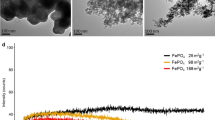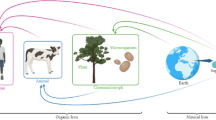Abstract
ABSTRACT: There is limited information on the bioavailability of Fe in infant weaning foods, mainly because of the difficulties of measuring Fe utilization directly in infants. The aim of this study was to develop a safe and relatively noninvasive method for studying Fe bioavailability (measured as percent Fe incorporation into red blood cells) in infants using 54Fe, 57Fe, and 58Fe stable isotopes. Four commonly used weaning foods were selected for study, labeled extrinsically with 57Fe- or 58Fe-enriched ferrous sulfate, and fed to five female and five male 9-mo-old fasting infants, using a multiple-dosing technique. Each food was given three times, labeled with one isotope, with a fruit juice drink containing 50 mg of ascorbic acid, and three times, labeled with a different isotope, with an ascorbic acid-free drink. Fourteen days after the last test meal, a blood sample was obtained from a heel-prick, spiked with a known amount of 54Fe, digested, and purified by ion exchange; isotopic enrichment and total Fe content were measured by quadrupole thermal ionization mass spectrometry. The proportion of administered dose of isotope circulating in the blood was calculated from an estimate of blood volume. The geometric mean bioavailability (range) was 3.0% (1.2–9.5%) in a proprietary dehydrated vegetable product, 3.0% (1.1–21.2%) in Weetabix whole-wheat breakfast cereal, 3.1% (1.2–15.4%) in wholemeal bread and 4.3% (1.7–10.3%) in baked beans. When taken with the drink containing ascorbic acid, there was a 2-fold increase in bioavailability in all foods except the vegetable meal, presumably because this was already fortified with ascorbic acid. Thus, drinks containing 50 mg of ascorbic acid, taken with a meal, can significantly improve Fe bioavailability to infants from weaning foods low in ascorbic acid.
Similar content being viewed by others
Log in or create a free account to read this content
Gain free access to this article, as well as selected content from this journal and more on nature.com
or
Author information
Authors and Affiliations
Rights and permissions
About this article
Cite this article
Fairweather-Tait, S., Fox, T., Wharf, S. et al. The Bioavailability of Iron in Different Weaning Foods and the Enhancing Effect of a Fruit Drink Containing Ascorbic Acid. Pediatr Res 37, 389–394 (1995). https://doi.org/10.1203/00006450-199504000-00002
Received:
Accepted:
Issue date:
DOI: https://doi.org/10.1203/00006450-199504000-00002
This article is cited by
-
Multiple Emulsions for Enhanced Delivery of Vitamins and Iron Micronutrients and Their Application for Food Fortification
Food and Bioprocess Technology (2021)
-
Reminiscences of my life as a nutritionist—and looking to the future
European Journal of Clinical Nutrition (2020)
-
Use of commercial infant cereals as complementary food in infants and young children in Ghana
BMC Nutrition (2017)
-
Isotope Ratio Measurements of Iron in Blood Samples by Multi-collector ICP-MS to Support Nutritional Investigations in Humans
Biological Trace Element Research (2008)
-
Associations of iron status with dietary and other factors in 6-year-old children
European Journal of Clinical Nutrition (2007)



